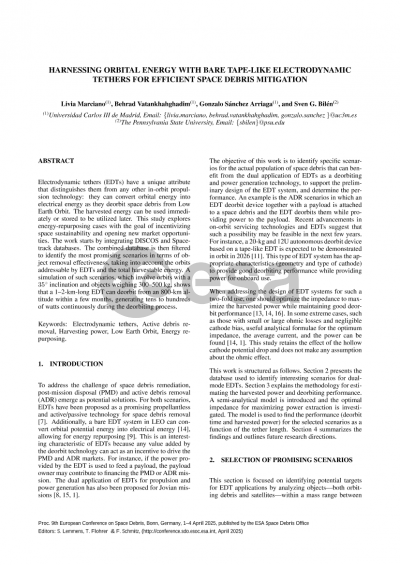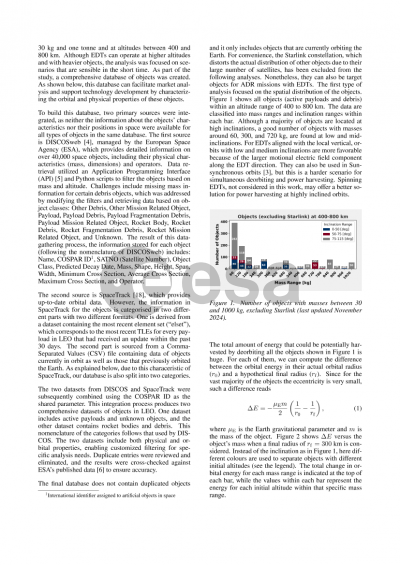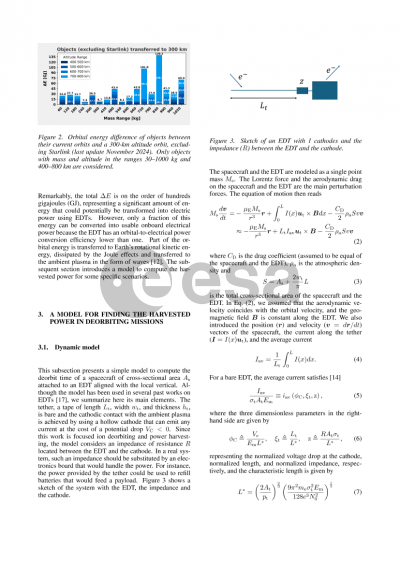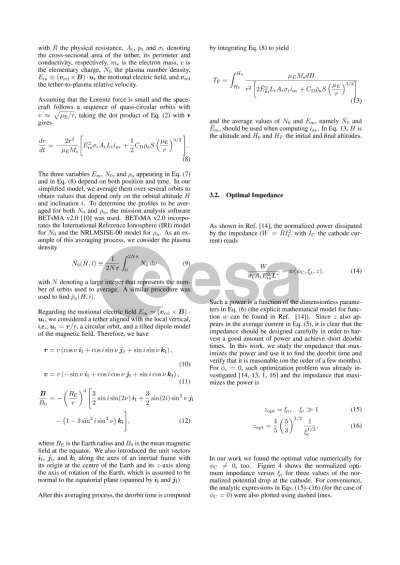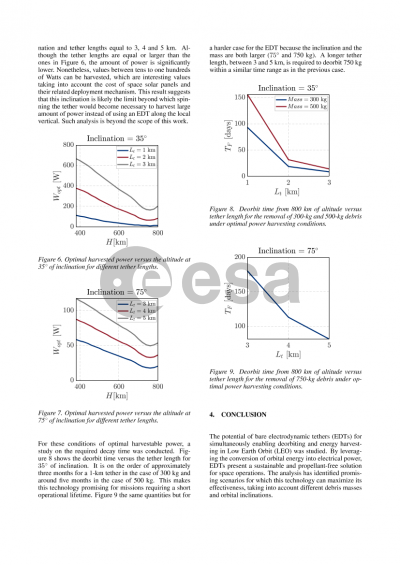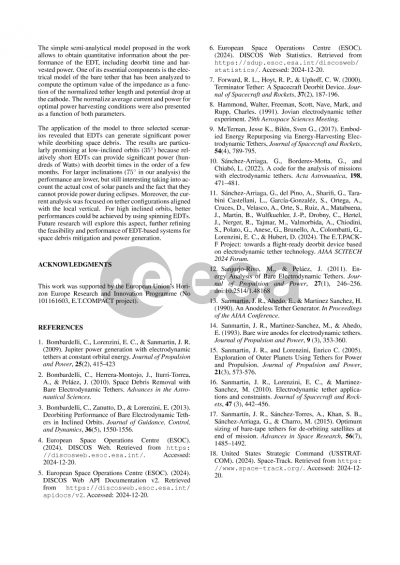Document details

Abstract
Bare electrodynamic tethers (EDTs), which convert orbital energy into electrical energy while deorbiting space debris [1], have been proposed as an effective tool for energy repurposing in Low Earth Orbit (LEO) [2]. The harvested energy can be used immediately, stored for later use, or reinvested to modify the spacecraft's orbit. A small spacecraft equipped with an EDT, when attached to a piece of space debris, can deorbit the debris while simultaneously accomplishing a secondary objective using the harvested energy.
This work explores an energy-repurposing scenario that provides benefits beyond deorbiting, contributing to the sustainable use of space and opening new market opportunities. The analysis begins by identifying the most promising objects and orbits compatible with the characteristics of EDTs, which rely on ambient plasma and the geomagnetic field to generate Lorentz drag and harvest power. A comprehensive database is developed by integrating the DISCOS and Space-Track databases, hence consolidating detailed information on object masses, dimensions, cross-sectional areas, operators, and orbital parameters.
The database is filtered to select objects within specific mass ranges and altitudes (400–1,200 km), ensuring compatibility with the tether system's operational requirements. The initial focus is on objects with masses between 25 kg and 1,000 kg, followed by larger, high-risk targets such as rocket upper stages. This analysis serves as the foundation for a market study to identify viable targets for tether-based deorbiting systems.
Building on the market analysis, two subsequent studies are conducted. First of all, the total harvestable energy is estimated by calculating the orbital energy of all objects in the database, assuming a specific orbital-to-electric power conversion efficiency for the EDT. Secondly, a detailed analysis is conducted for the most promising scenarios, identified based on the object's mass and its orbital parameters, utilizing the advanced mission analysis software BETsMA v2.0 [3]. This software is employed to optimize the dimensions and characteristics of bare and tape-like EDTs and to perform dynamic simulations of deorbiting maneuvers. These simulations compute critical parameters such as deorbit time, orbital-to-electric power conversion, and key electrical, mechanical, risk-related, and thermal variables.
The results highlight the potential of EDT systems as a propellant-free solution for deorbiting space debris while simultaneously harvesting and repurposing energy for secondary applications. Through detailed simulations, promising scenarios are identified where EDTs can address the immediate challenges of space debris mitigation and contribute to the broader goals of sustainable space operations. By leveraging innovative tether designs, market analyses, and advanced simulation tools like BETsMA, this study expands the scope of energy repurposing in the context of EDTs. Therefore, it combines the preparation of a comprehensive database of space debris with optimized mission simulations to unlock new opportunities for sustainable and efficient technologies in the space sector.
[1] SANMARTIN, J. R.; MARTINEZ-SANCHEZ, M.; AHEDO, E. Bare wire anodes for electrodynamic tethers. Journal of Propulsion and Power. 1993, vol. 9, no. 3, pp. 353–360. Available from DOI: 10.2514/3.23629.
[2] MCTERNAN, Jesse K.; BILÉN, Sven G. Embodied Energy Repurposing via Energy-Harvesting Electrodynamic Tethers. Journal of Spacecraft and Rockets. 2017, vol. 54, no. 4, pp. 789–795. Available from DOI: 10.2514/1.A33783.
[3] SÁNCHEZ-ARRIAGA, Gonzalo; BORDERES-MOTTA, Gabriel; CHIABÓ, Luca. A code for the analysis of missions with electrodynamic tethers. Acta Astronautica. 2022, vol. 198, pp. 471–481. Available from DOI: 10.1016/j.actaastro.2022.06.021.
Preview
